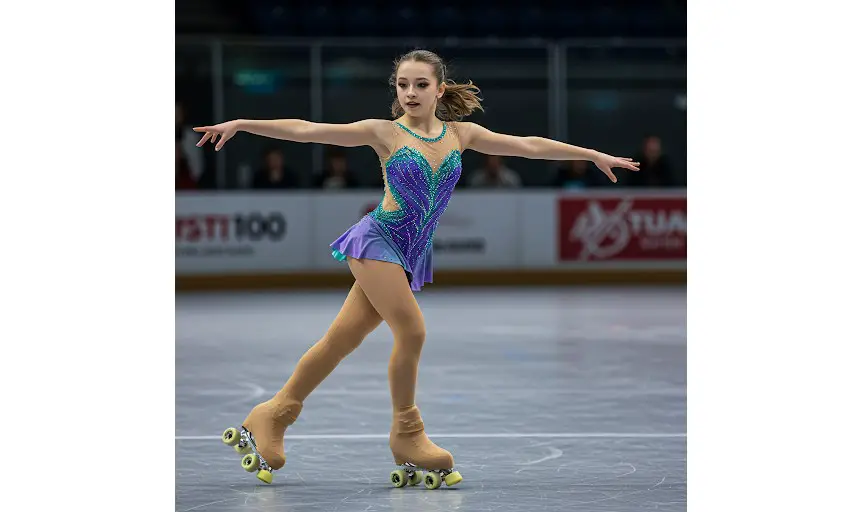
The Graceful World of Artistic Roller Skating: A Complete Guide
Artistic Roller Skating blends elegance, athleticism, and precision. This sport captivates spectators and participants alike. With roots stretching back over a century, it continues to thrive today. Artistic Roller Skating offers a dynamic alternative to figure skating on ice. It combines the beauty of dance with technical prowess. For many, it is more than just a sport—it’s a way of life.
Origins and History
Artistic Roller Skating began in the mid-18th century. The first roller skate was invented by John Joseph Merlin in 1760. However, his design lacked maneuverability. Skates became more practical in the 1860s when James Leonard Plimpton developed the quad skate. This design revolutionized the sport.
In the early 20th century, the sport began to organize. Clubs formed in Europe and North America. The Roller Skating Rink Operators Association (RSROA) was founded in the United States in 1937. This organization helped standardize rules. Soon after, international competitions emerged. The International Roller Sports Federation (FIRS), now part of World Skate, began holding World Championships in the 1940s.
The sport evolved rapidly through the 20th century. New disciplines were introduced, including freestyle, pairs, dance, and precision team skating. Innovations in skate technology and training techniques contributed to higher performance standards.
Global Popularity and Reach
Artistic Roller Skating enjoys a global following. It is especially popular in Europe, South America, and parts of Asia. Countries such as Italy, Argentina, Brazil, and Portugal lead the way in international competitions.
Italy has produced some of the most decorated athletes in the sport. In South America, Argentina hosts many international events and champions. Brazil has a vibrant national scene with numerous clubs and leagues. In Asia, India and China have developed strong amateur programs.
The sport remains niche in North America but continues to grow. Local clubs, schools, and communities promote it through showcases and youth programs. Skaters from the United States and Canada have also gained recognition on the world stage.
World Skate governs the sport globally. It oversees competitions, rankings, and standard rules. The organization collaborates with national bodies to maintain consistency.
Amateur Artistic Roller Skating: Youth and Schools
At the grassroots level, the sport starts young. Children often begin training around the age of five or six. Local skating clubs offer introductory classes. These clubs act as feeder systems for competitive teams.
Schools in some countries integrate the sport into physical education programs. In Brazil and Argentina, school-based leagues encourage early participation. These programs teach basic techniques and team dynamics.
As skaters progress, they enter regional and national competitions. These events follow strict judging criteria. Performances are scored based on technical skills, choreography, and presentation. Skaters compete in categories by age and skill level.
Youth competitions are vital for talent development. They provide a pathway to elite and professional levels. National federations often scout young talent from these events.
Non-profit organizations support amateur Artistic Roller Skating. They offer scholarships, equipment, and travel assistance. These efforts ensure that financial barriers do not hinder talent.
Professional Leagues and Organizations
Though the sport lacks a global professional league like football or basketball, it features high-level competitions. The World Roller Games, organized by World Skate, serve as the pinnacle event. This tournament includes the best skaters from across the globe.
Italy’s national federation hosts the Italian Artistic Skating Championship. It is one of the most prestigious events in the sport. Skaters train year-round to qualify.
In South America, the Pan American Roller Sports Championships provide another elite platform. Brazil and Argentina send their top skaters to compete.
Some private clubs operate semi-professional programs. These clubs offer stipends, coaching, and travel support. Their goal is to prepare skaters for international competition.
The World Skate Academy plays a critical role in professional development. It offers coaching certification and advanced training programs. Through these efforts, the skill level of skaters continues to rise.
Political and Social Significance
Artistic Roller Skating carries significant cultural weight in many regions. In Latin America, it fosters community pride and national identity. Events often feature large audiences and media coverage.
The sport empowers youth, especially girls, in conservative societies. It offers a platform for expression, confidence, and independence. Programs in India, for instance, encourage girls to pursue skating professionally.
It also promotes inclusivity. Skating clubs welcome people from diverse backgrounds. Adaptive skating programs support individuals with disabilities. These efforts help foster a more inclusive sporting culture.
Government support plays a crucial role. Funding and infrastructure development boost participation. Countries that invest in facilities and coaching see higher engagement levels.
Diplomatic events sometimes feature Artistic Roller Skating exhibitions. These performances showcase cultural harmony and artistic talent. They help build international goodwill.
Rules and Disciplines
Artistic Roller Skating includes several disciplines. Each one has unique rules and judging criteria. The main categories are freestyle, pairs, dance, and precision team skating.
In freestyle, skaters perform solo routines. These routines include jumps, spins, and footwork. Judges score based on difficulty, execution, and artistic impression.
Pair skating involves two skaters performing synchronized routines. Elements include lifts, spins, and throws. Timing and coordination are essential for high scores.
Dance skating focuses on rhythm and interpretation. Skaters perform to specific music styles. The routines must reflect the character of the music.
Precision team skating features teams of 8 to 24 skaters. They perform choreographed routines in perfect harmony. Scoring considers synchronization, formations, and creativity.
All disciplines require costumes that match the theme. Music selection plays a vital role. Judges look for creativity, originality, and technical execution.
Scoring is handled by a panel of certified judges. They use a point-based system. Scores are divided into technical and artistic categories. The highest combined score wins.
Time limits vary by discipline. For example, a freestyle routine may last 2.5 to 4 minutes. Skaters must complete mandatory elements within this time.
Safety rules are strictly enforced. Skaters must wear appropriate gear during practice. Coaches ensure that skaters are physically prepared for competition.
Conclusion
Artistic Roller Skating continues to enchant audiences worldwide. It offers a unique blend of art and sport. From humble beginnings to global competitions, its journey reflects human creativity and perseverance.
Youth programs nurture future champions. Professional events showcase elite talent. Socially and politically, the sport brings people together. It inspires communities, transcends barriers, and celebrates diversity.
As it grows in popularity, more people will discover its magic. With continued support and recognition, Artistic Roller Skating will reach even greater heights. The future looks bright for this graceful and powerful sport.





